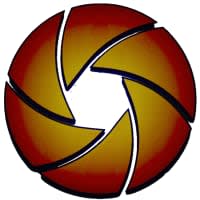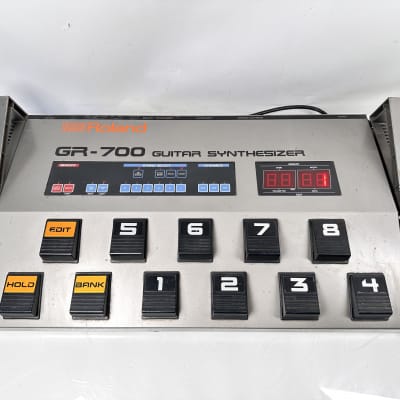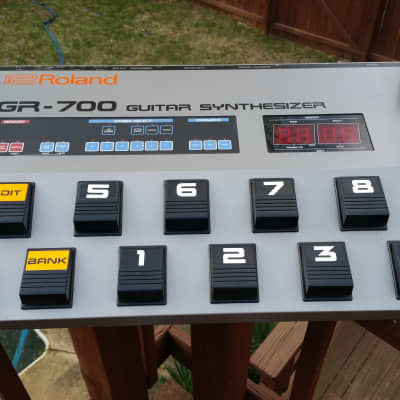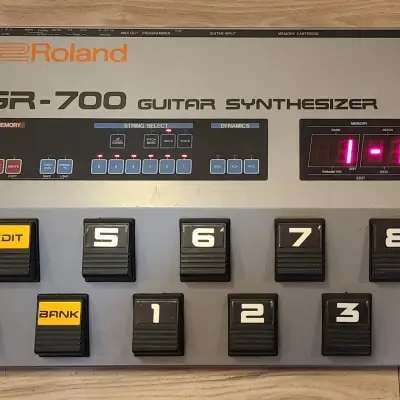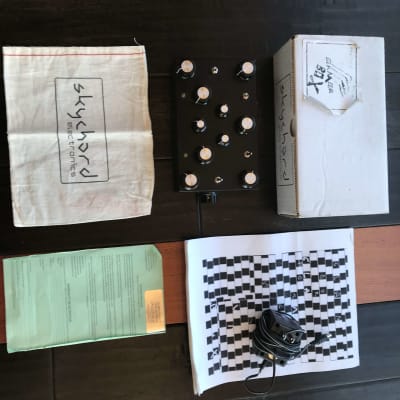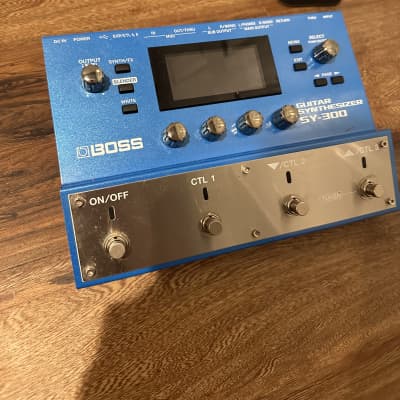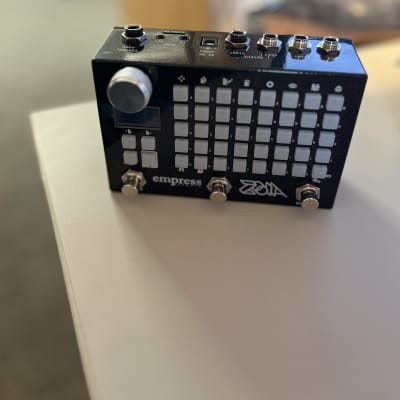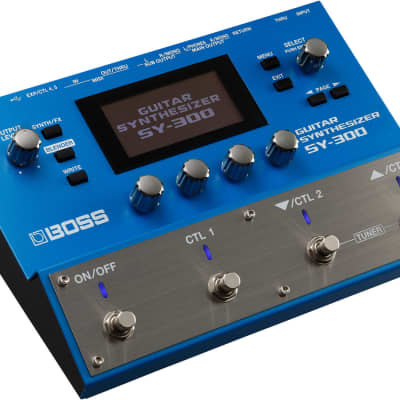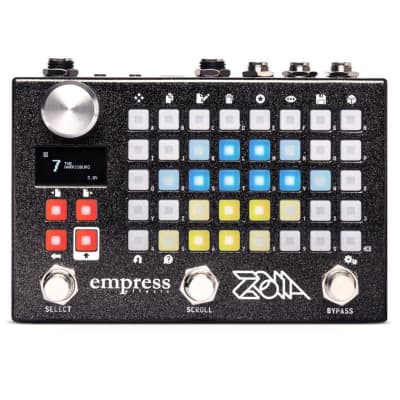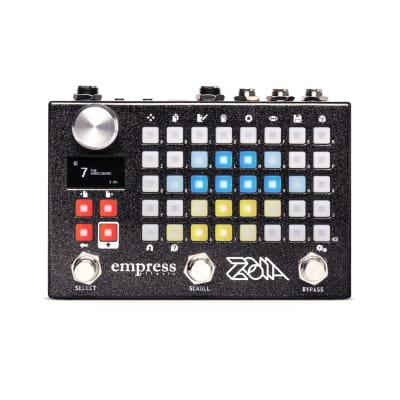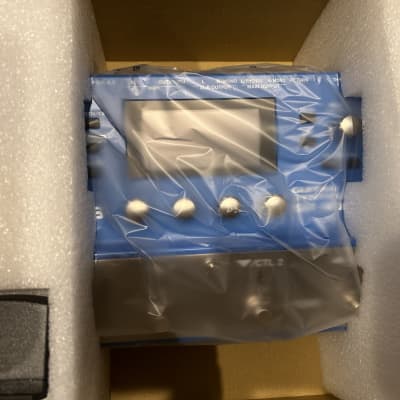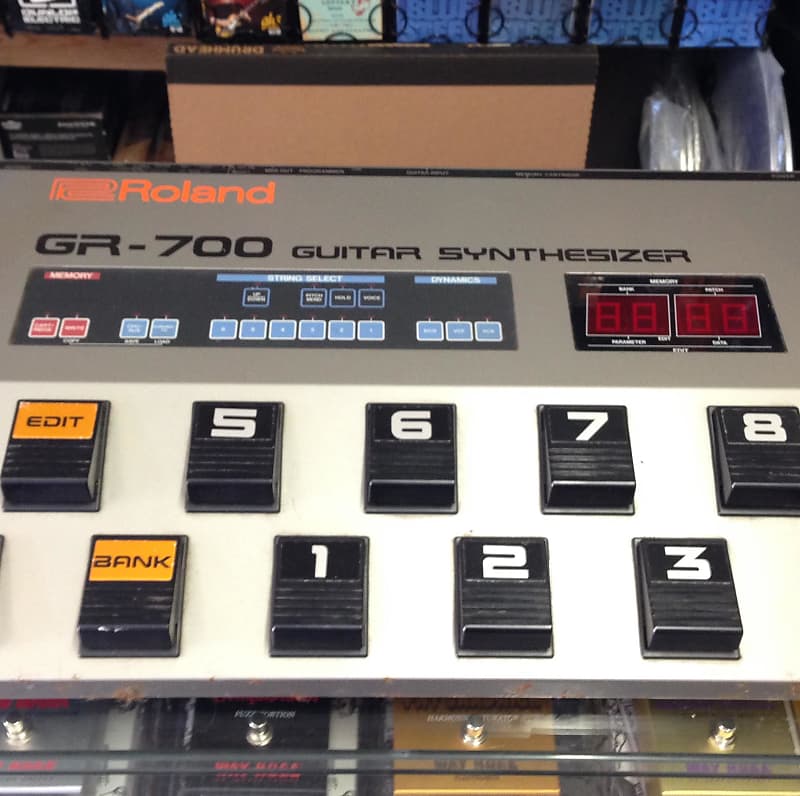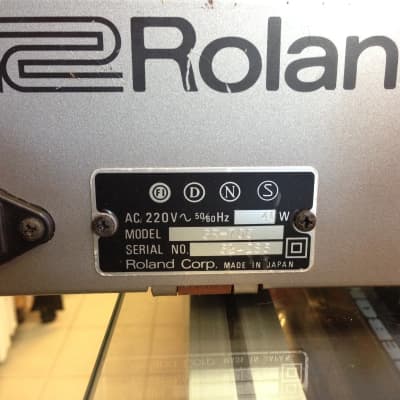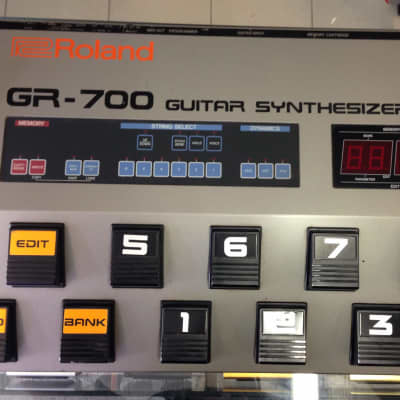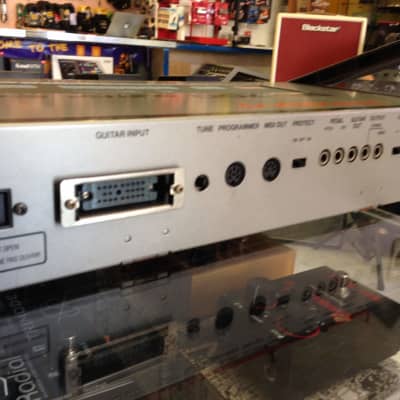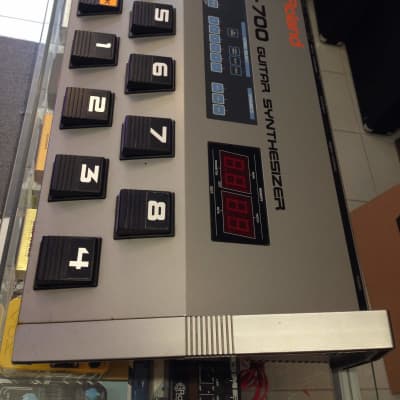Introduction to the Roland GR-700: The GR-700 is classic Roland 1980s analog synthesizer technology. Released in late 1984, the GR-700 is the pinnacle of early Roland guitar synthesizer design. The distinctive and futuristic GR-700 features both a digital CPU for guitar tracking and a warm, fat hybrid digital/analog synthesizer engine for lush sounds.
A look at articles written about the GR-700 in , , and other magazines, plus the synthesizer's appearance on television shows like (US) and the series (UK), demonstrate the enthusiasm in the belief that the long anticipated age of the guitar synthesizer had finally arrived. The GR-700 launched just as the MIDI standard was being introduced, and musicians were entering a brave new world of electronic music where relatively inexpensive CPUs made possible instruments like the , drums, and the GR-700, instruments unimaginable a decade earlier.
Jimmy Page and GR-700
Click to enlarge Generally speaking, the GR-700 has not held up as well as its 24-pin brethren, like the or . But for a guitar player in 1985, the GR-700 offered an astonishing range of sounds that could never have been triggered from a guitar: strings, basses, electronic effects, synths, and more. It was assumed that guitar players eventually would become fluent in , and that the great silver box could become as ubiquitous as the wah-wah pedal.
Like the current generation of Roland guitar synths, the GR-700 controls the internal synth engine directly for faster response. But, make no mistake about it, when it comes to tracking the GR-700 is not a GR-300. Of all the products Roland has ever made, the GR-700 has the trickiest and most erratic tracking. The GR-700 is certainly better than equivalent products made by other manufactures at the time, but it is inferior to the GR-100, GR-300, , , or the Ibanez . The GR-700 has a MIDI out port for controlling other MIDI modules, but the MIDI output is erratic and unreliable. In addition, no pitch bend information is sent via MIDI.
Stand alone converters like the GM-70 became more popular toward the end of the eighties. They were faster and more accurate than the GR-700, plus via MIDI the range of sounds available to guitar players expanded considerably. The GR-700's combination of clunky pitch tracking, married to a limited synth engine, boxed up inside a huge, heavy foot pedal crammed with complex electronics made it more of a curiosity than a must-have piece of gear for the gigging musician. Still, for those who love the GR-700, nothing else sounds or responds quite like this unique guitar synthesizer.
The GR-700 was played and recorded by such prominent guitarists as Al Dimeola, Robert Fripp, , and Andy Summers. The GR-700 was the top-of-the-line guitar synthesizer system in the mid-eighties. Retail price on a GR-700 was almost two-thousand dollars. More recently, has used the Roland GR-700 extensively on several records.
The GR-700 Synth Engine: Roland GR-700 The GR-700 has six, independent, analog synth voices, two oscillators on each voice. Roland digitally clocked these oscillators and called them "DCOs", as a response to the fact that the earlier Roland oscillator’s pitch had a tendency to drift in performance. The DCOs on the GR-700 generate classic analog waveforms: sawtooth wave, square wave, and pulse width modulated wave, as well a noise for special effects.
Click on image for larger view.
The oscillators on the GR-700 can also be synced with cross modulation for hard, biting analog sounds or with ring modulation for metallic sounds. The GR-700 has a sweet Low Pass Filter with Resonance on each voice, with an additional High Pass Filter. And of course there are complete LFO and Envelope controls. To top it all off, the GR-700 adds a classic Roland analog Chorus circuit! If you like that expansive Roland Chorus found on early 80s products, you will love the Chorus on the GR-700.
The synth engine in the GR-700 is the same synth engine found in the Roland MKS-30 and Jupiter JX-3P. And, like these synths, the Roland GR-700 can use the as a programming tool.
